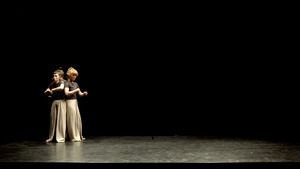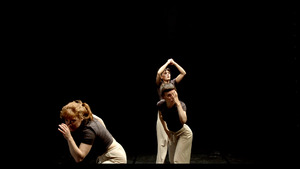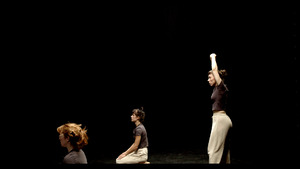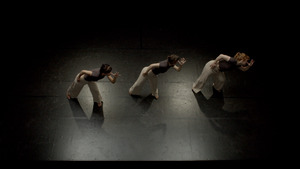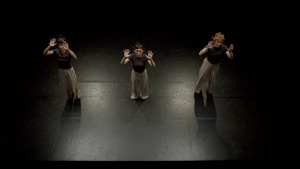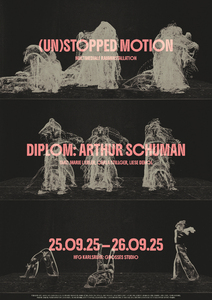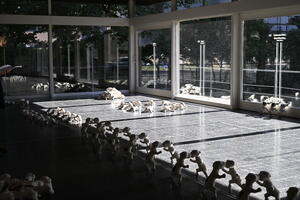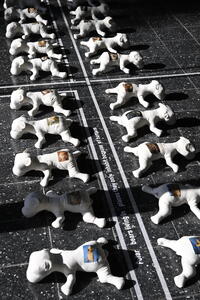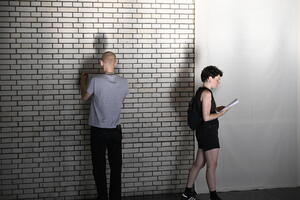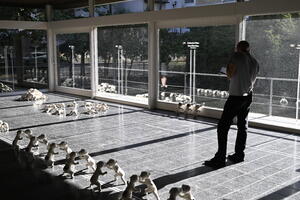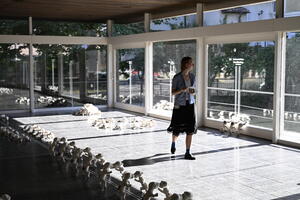Hanne König
| Name | Hanne König |
155 Inhalte
- Seite 1 von 13
(Un)Stopped Motion
- Titel
- (Un)Stopped Motion
- Autor/in
- Schlagworte
- Datierung
- 24.09.2025-29.09.2025
- Titel
- (Un)Stopped Motion
- Titel (en)
- (Un)Stopped Motion
- Urheberrechtshinweis
- © Arthur Schuman
- Rechtsschutz/Lizenz
- Freigabe Nutzung HfG
- Medienersteller/in
- Beziehung/Funktion
- Abgebildete Personen
- Projektleiter/in
- Semester
- Studiengang
- Typ der Abschlussarbeit
- Importiert am
- 22.10.2025
- Übergeordnete Sets
- 1
(Un)Stopped Motion
- Titel
- (Un)Stopped Motion
- Autor/in
- Schlagworte
- Datierung
- 24.09.2025-29.09.2025
- Titel
- (Un)Stopped Motion
- Titel (en)
- (Un)Stopped Motion
- Urheberrechtshinweis
- © Arthur Schuman
- Rechtsschutz/Lizenz
- Freigabe Nutzung HfG
- Medienersteller/in
- Beziehung/Funktion
- Abgebildete Personen
- Projektleiter/in
- Semester
- Studiengang
- Typ der Abschlussarbeit
- Importiert am
- 22.10.2025
- Übergeordnete Sets
- 1
(Un)Stopped Motion
- Titel
- (Un)Stopped Motion
- Autor/in
- Schlagworte
- Datierung
- 24.09.2025-29.09.2025
- Titel
- (Un)Stopped Motion
- Titel (en)
- (Un)Stopped Motion
- Urheberrechtshinweis
- © Arthur Schuman
- Rechtsschutz/Lizenz
- Freigabe Nutzung HfG
- Medienersteller/in
- Beziehung/Funktion
- Abgebildete Personen
- Projektleiter/in
- Semester
- Studiengang
- Typ der Abschlussarbeit
- Importiert am
- 22.10.2025
- Übergeordnete Sets
- 1
(Un)Stopped Motion
- Titel
- (Un)Stopped Motion
- Autor/in
- Schlagworte
- Datierung
- 24.09.2025-29.09.2025
- Titel
- (Un)Stopped Motion
- Titel (en)
- (Un)Stopped Motion
- Urheberrechtshinweis
- © Arthur Schuman
- Rechtsschutz/Lizenz
- Freigabe Nutzung HfG
- Medienersteller/in
- Beziehung/Funktion
- Abgebildete Personen
- Projektleiter/in
- Semester
- Studiengang
- Typ der Abschlussarbeit
- Importiert am
- 22.10.2025
- Übergeordnete Sets
- 1
(Un)Stopped Motion
- Titel
- (Un)Stopped Motion
- Autor/in
- Schlagworte
- Datierung
- 24.09.2025-29.09.2025
- Titel
- (Un)Stopped Motion
- Titel (en)
- (Un)Stopped Motion
- Urheberrechtshinweis
- © Arthur Schuman
- Rechtsschutz/Lizenz
- Freigabe Nutzung HfG
- Medienersteller/in
- Beziehung/Funktion
- Abgebildete Personen
- Projektleiter/in
- Semester
- Studiengang
- Typ der Abschlussarbeit
- Importiert am
- 22.10.2025
- Übergeordnete Sets
- 1
(Un)Stopped Motion
- Titel
- (Un)Stopped Motion
- Autor/in
- Schlagworte
- Datierung
- 24.09.2025-29.09.2025
- Titel
- (Un)Stopped Motion
- Titel (en)
- (Un)Stopped Motion
- Urheberrechtshinweis
- © Arthur Schuman
- Rechtsschutz/Lizenz
- Freigabe Nutzung HfG
- Medienersteller/in
- Beziehung/Funktion
- Abgebildete Personen
- Projektleiter/in
- Semester
- Studiengang
- Typ der Abschlussarbeit
- Importiert am
- 22.10.2025
- Übergeordnete Sets
- 1
(Un)Stopped Motion
- Titel
- (Un)Stopped Motion
- Autor/in
- Schlagworte
- Datierung
- 24.09.2025-29.09.25
- Titel
- (Un)Stopped Motion
- Titel (en)
- (Un)Stopped Motion
- Urheberrechtshinweis
- © Arthur Schuman, Paul Schmidt
- Rechtsschutz/Lizenz
- Freigabe Nutzung HfG
- Medienersteller/in
- Beziehung/Funktion
- Projektleiter/in
- Semester
- Studiengang
- Typ der Abschlussarbeit
- Importiert am
- 22.10.2025
- Übergeordnete Sets
- 1
Ambassadors - Ausstellungsansicht
- Titel
- Ambassadors - Ausstellungsansicht
- Autor/in
- Datierung
- 04.07.2025
- Titel
- Ambassadors - Ausstellungsansicht
- Titel (en)
- Ambassadors - Exhibition View
- Urheberrechtshinweis
- © Maximilian Zschiesche
- Rechtsschutz/Lizenz
- Medienersteller/in
- Beziehung/Funktion
- Medien-Beschreibung
- Die Fotografie zeigt eine Ausstellungsansicht ohne Rezipient*innen in einem großen, rechteckigen Raum mit bodentiefen Fenstern. An jedem der Fenster ist mittig eine in weißer Schrift angebrachte Überschrift zu erkennen. Von diesen Überschriften aus verlaufen senkrechte, an die Scheiben geklebte Kreppbänder hinunter auf den Boden, wo sie ein Raster bilden und die Überschriften miteinander verbinden. Über und zwischen den auf dem Boden verlaufenden Kreppbändern befinden sich 120 aus weißlichem, ungebleichtem Baumwollstoff bestehende Kuscheltiere in der Form von neugeborenen Eisbären, auf deren Rücken jeweils eine Fotografie gedruckt ist. Sie sind in unterschiedlichen Formationen angeordnet. Im Vordergrund ist eine lange Reihe der Kuscheltiere zu sehen, die in gleichmäßigen Abständen aufgestellt sind. Weiter hinten liegen sie in lockeren Häufungen oder Gruppen – teils direkt im Sonnenlicht, das durch die Fenster in den Raum scheint, teils im Schatten.
- Medien-Beschreibung (en)
- The photograph shows an exhibition view without visitors in a large, rectangular room with floor-to-ceiling windows. At the center of each window, a heading written in white letters can be seen. From these headings, vertical strips of masking tape run down the glass to the floor, where they form a grid that connects the headings to one another. Above and between the strips of tape on the floor are 120 stuffed animals made of off-white, unbleached cotton fabric, shaped like newborn polar bears, each with a photograph printed on its back. They are arranged in various formations. In the foreground, a long row of the stuffed animals can be seen, positioned at regular intervals. Further back, they lie in loose clusters or groups—some directly in the sunlight streaming through the windows into the room, others in shadow.
- Alternativ-Text (de)
- Ausstellungsraum mit bodentiefen Fenstern und leeren Eisbär-Kuscheltieren: An den Fenstern hängen Überschriften, von denen senkrechte Kreppbänder zum Boden verlaufen und ein Raster bilden. 120 weiße Stoff-Eisbären mit Fotodruck liegen oder stehen in Reihen und Gruppen – teils im Sonnenlicht, teils im Schatten.
- Alternativ-Text (en)
- Exhibition space with floor-to-ceiling windows and empty polar bear stuffed animals: Headings hang from the windows, with vertical crepe tape running down to the floor, forming a grid. 120 white fabric polar bears with photo prints lie or stand in rows and groups—some in sunlight, some in shadow.
- Projektleiter/in
- Semester
- Studiengang
- Typ der Abschlussarbeit
- Importiert am
- 20.10.2025
- Übergeordnete Sets
- 1
Ambassadors - Ausstellungsansicht
- Titel
- Ambassadors - Ausstellungsansicht
- Autor/in
- Datierung
- 04.07.2025
- Titel
- Ambassadors - Ausstellungsansicht
- Titel (en)
- Ambassadors - Exhibition View
- Urheberrechtshinweis
- © Maximilian Zschiesche
- Rechtsschutz/Lizenz
- Medienersteller/in
- Beziehung/Funktion
- Medien-Beschreibung
- Die Fotografie zeigt eine Detailansicht der Installation. Auf einem Boden aus schwarzen Fliesen liegen zwanzig aus weißlichem, ungebleichtem Baumwollstoff gefertigte Kuscheltiere in der Form neugeborener Eisbären. Auf ihren Rücken sind Fotografien aufgedruckt, die Eisbären in menschlicher Gefangenschaft zeigen. Die Anordnung der Figuren erfolgt in zwei gegenüberliegenden Reihen, deren Köpfe voneinander abgewandt sind.
- Medien-Beschreibung (en)
- The photograph shows a detailed view of the installation. On a floor made of black tiles lie twenty stuffed animals made of off-white, unbleached cotton fabric, shaped like newborn polar bears. On their backs are printed photographs depicting polar bears in human captivity. The figures are arranged in two opposing rows, their heads turned away from one another.
- Alternativ-Text (de)
- Detailansicht der Installation: Zwanzig weiße Stoff-Eisbären liegen auf schwarzem Fliesenboden. Auf ihren Rücken sind Fotos von Eisbären in Gefangenschaft gedruckt. Die Figuren sind in zwei Reihen angeordnet, deren Köpfe voneinander abgewandt sind.
- Alternativ-Text (en)
- Detailed view of the installation: Twenty white fabric polar bears lie on black tile flooring. Photos of polar bears in captivity are printed on their backs. The figures are arranged in two rows, their heads turned away from each other.
- Projektleiter/in
- Semester
- Studiengang
- Typ der Abschlussarbeit
- Importiert am
- 20.10.2025
- Übergeordnete Sets
- 1
Ambassadors - Ausstellungsansicht
- Titel
- Ambassadors - Ausstellungsansicht
- Autor/in
- Datierung
- 04.07.2025
- Titel
- Ambassadors - Ausstellungsansicht
- Titel (en)
- Ambassadors - Exhibition View
- Urheberrechtshinweis
- © Maximilian Zschiesche
- Rechtsschutz/Lizenz
- Medienersteller/in
- Beziehung/Funktion
- Medien-Beschreibung
- Die Ausstellungsansicht zeigt Besucher*innen mit der Publikation.
- Medien-Beschreibung (en)
- The exhibition view depicts visitors with the publication.
- Abgebildete Personen
- Alternativ-Text (de)
- Zwei Personen halten Publikationen in den Händen.
- Alternativ-Text (en)
- Two people are holding publications in their hands.
- Projektleiter/in
- Semester
- Studiengang
- Typ der Abschlussarbeit
- Importiert am
- 20.10.2025
- Übergeordnete Sets
- 1
Ambassadors - Ausstellungsansicht
- Titel
- Ambassadors - Ausstellungsansicht
- Autor/in
- Datierung
- 04.07.2025
- Titel
- Ambassadors - Ausstellungsansicht
- Titel (en)
- Ambassadors - Exhibition View
- Urheberrechtshinweis
- © Maximilian Zschiesche
- Rechtsschutz/Lizenz
- Medienersteller/in
- Beziehung/Funktion
- Medien-Beschreibung
- Die Fotografie zeigt eine Ausstellungsansicht mit einem Rezipienten, der eine der Begleitpublikationen liest, in einem großen, rechteckigen Raum mit bodentiefen Fenstern. An jedem der Fenster ist mittig eine in weißer Schrift angebrachte Überschrift zu erkennen. Von diesen Überschriften aus verlaufen senkrechte, an die Scheiben geklebte Kreppbänder hinunter auf den Boden, wo sie ein Raster bilden und die Überschriften miteinander verbinden. Über und zwischen den auf dem Boden verlaufenden Kreppbändern befinden sich 120 aus weißlichem, ungebleichtem Baumwollstoff gefertigte Kuscheltiere in der Form von neugeborenen Eisbären, auf deren Rücken jeweils eine Fotografie gedruckt ist. Sie sind in unterschiedlichen Formationen angeordnet. Im Vordergrund ist eine lange Reihe der Kuscheltiere zu sehen, die in gleichmäßigen Abständen aufgestellt sind. Weiter hinten liegen sie in lockeren Häufungen oder Gruppen – teils direkt im Sonnenlicht, das durch die Fenster in den Raum scheint, teils im Schatten.
- Die Fotografie zeigt eine Ausstellungsansicht mit einem Rezipienten, der eine der Begleitpublikationen liest, in einem großen, rechteckigen Raum mit bodentiefen Fenstern. An jedem der Fenster ist mittig eine in weißer Schrift angebrachte Überschrift zu erkennen. Von diesen Überschriften aus verlaufen senkrechte, an die Scheiben geklebte Kreppbänder hinunter auf den Boden, wo sie ein Raster bilden und die Überschriften miteinander verbinden. Über und zwischen den auf dem Boden verlaufenden Kreppbändern befinden sich 120 aus weißlichem, ungebleichtem Baumwollstoff gefertigte Kuscheltiere in der Form von neugeborenen Eisbären, auf deren Rücken jeweils eine Fotografie gedruckt ist. Sie sind in unterschiedlichen Formationen angeordnet. Im Vordergrund ist eine lange Reihe der Kuscheltiere zu sehen, die in gleichmäßigen Abständen aufgestellt sind. Weiter hinten liegen sie in lockeren Häufungen oder Gruppen – teils direkt im Sonnenlicht, das durch die Fenster in den Raum scheint, teils im Schatten.
- Medien-Beschreibung (en)
- The photograph shows an exhibition view with a visitor reading one of the accompanying publications in a large, rectangular room with floor-to-ceiling windows. At the center of each window, a heading in white lettering can be seen. From these headings, vertical strips of masking tape run down the glass to the floor, where they form a grid that connects the headings to one another. Above and between the strips of tape on the floor are 120 stuffed animals made of off-white, unbleached cotton fabric, shaped like newborn polar bears, each with a photograph printed on its back. They are arranged in various formations. In the foreground, a long row of the stuffed animals is positioned at regular intervals. Further back, they lie in loose clusters or groups—some directly in the sunlight streaming through the windows into the room, others in shadow.
- Abgebildete Personen
- Alternativ-Text (de)
- Ausstellungsraum mit bodentiefen Fenstern: Ein Besucher liest eine Begleitpublikation. An den Fenstern hängen Überschriften, von denen senkrechte Kreppbänder zum Boden verlaufen und ein Raster bilden. 120 weiße Stoff-Eisbären mit Fotodruck liegen oder stehen in Reihen und Gruppen – teils im Sonnenlicht, teils im Schatten.
- Alternativ-Text (en)
- Exhibition space with floor-to-ceiling windows: a visitor reads an accompanying publication. Headings hang from the windows, with vertical crepe tape running down to the floor, forming a grid. 120 white fabric polar bears with photo prints lie or stand in rows and groups—some in sunlight, some in shadow.
- Projektleiter/in
- Semester
- Studiengang
- Typ der Abschlussarbeit
- Importiert am
- 20.10.2025
- Übergeordnete Sets
- 1
Ambassadors - Ausstellungsansicht
- Titel
- Ambassadors - Ausstellungsansicht
- Autor/in
- Datierung
- 04.07.2025
- Titel
- Ambassadors - Ausstellungsansicht
- Titel (en)
- Ambassadors - Exhibition View
- Urheberrechtshinweis
- © Maximilian Zschiesche
- Rechtsschutz/Lizenz
- Medienersteller/in
- Beziehung/Funktion
- Medien-Beschreibung
- Die Fotografie zeigt eine Ausstellungsansicht mit einer Rezipientin, die eine der Begleitpublikationen liest, in einem großen, rechteckigen Raum mit bodentiefen Fenstern. An jedem der Fenster ist mittig eine in weißer Schrift angebrachte Überschrift zu erkennen. Von diesen Überschriften aus verlaufen senkrechte, an die Scheiben geklebte Kreppbänder hinunter auf den Boden, wo sie ein Raster bilden und die Überschriften miteinander verbinden. Über und zwischen den auf dem Boden verlaufenden Kreppbändern befinden sich 120 aus weißlichem, ungebleichtem Baumwollstoff gefertigte Kuscheltiere in der Form von neugeborenen Eisbären, auf deren Rücken jeweils eine Fotografie gedruckt ist. Sie sind in unterschiedlichen Formationen angeordnet. Im Vordergrund ist eine lange Reihe der Kuscheltiere zu sehen, die in gleichmäßigen Abständen aufgestellt sind. Weiter hinten liegen sie in lockeren Häufungen oder Gruppen – teils direkt im Sonnenlicht, das durch die Fenster in den Raum scheint, teils im Schatten.
- Medien-Beschreibung (en)
- The photograph shows an exhibition view with a visitor reading one of the accompanying publications in a large, rectangular room with floor-to-ceiling windows. At the center of each window, a heading in white lettering can be seen. From these headings, vertical strips of masking tape run down the glass to the floor, where they form a grid that connects the headings to one another. Above and between the strips of tape on the floor are 120 stuffed animals made of off-white, unbleached cotton fabric, shaped like newborn polar bears, each with a photograph printed on its back. They are arranged in various formations. In the foreground, a long row of the stuffed animals is positioned at regular intervals. Further back, they lie in loose clusters or groups—some directly in the sunlight streaming through the windows into the room, others in shadow.
- Abgebildete Personen
- Alternativ-Text (de)
- Ausstellungsraum mit bodentiefen Fenstern: Ein Besucher liest eine Begleitpublikation. An den Fenstern hängen Überschriften, von denen senkrechte Kreppbänder zum Boden verlaufen und ein Raster bilden. 120 weiße Stoff-Eisbären mit Fotodruck liegen oder stehen in Reihen und Gruppen – teils im Sonnenlicht, teils im Schatten.
- Alternativ-Text (en)
- Exhibition space with floor-to-ceiling windows: a visitor reads an accompanying publication. Headings hang from the windows, with vertical crepe tape running down to the floor, forming a grid. 120 white fabric polar bears with photo prints lie or stand in rows and groups—some in sunlight, some in shadow.
- Projektleiter/in
- Semester
- Studiengang
- Typ der Abschlussarbeit
- Importiert am
- 20.10.2025
- Übergeordnete Sets
- 1
